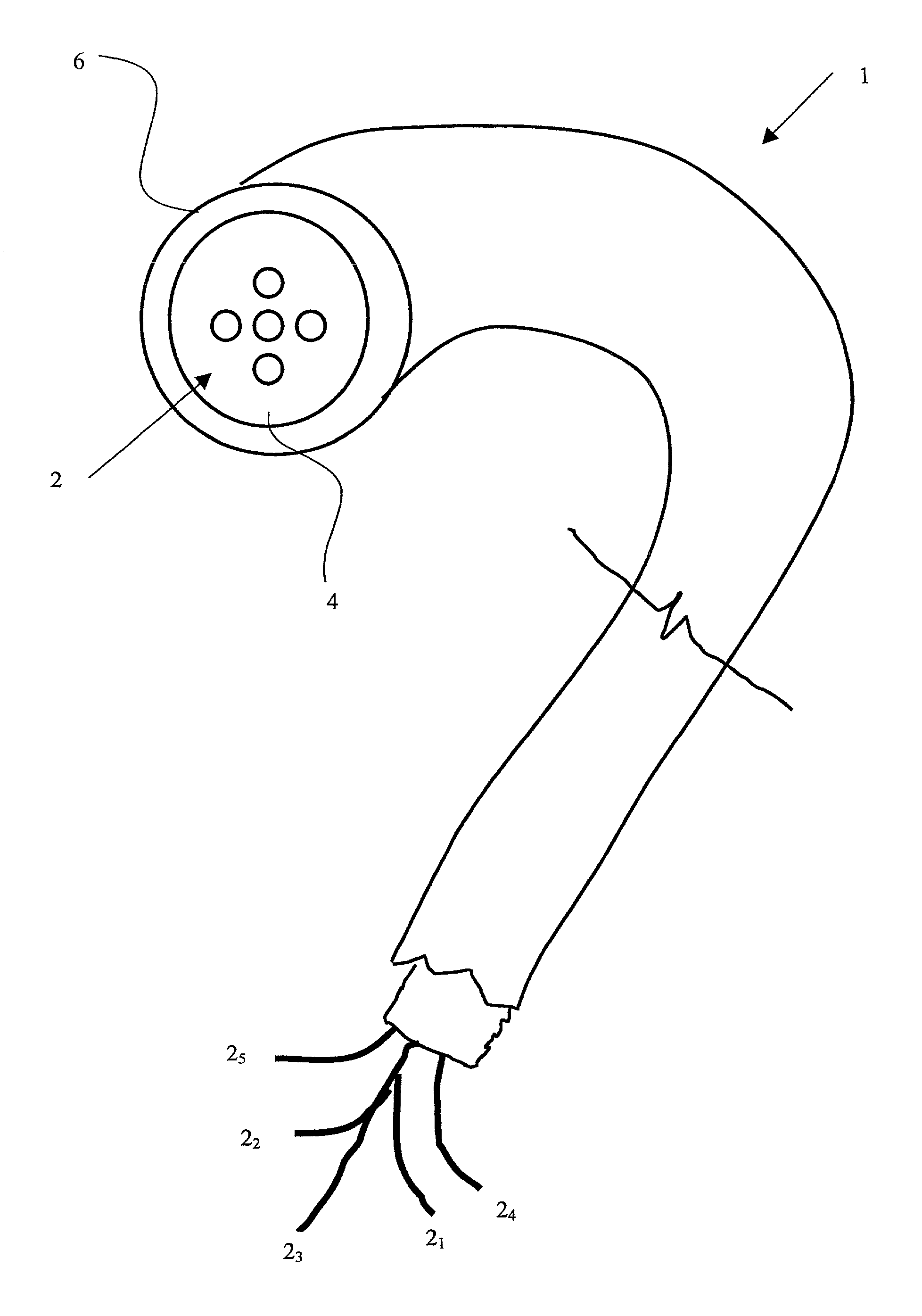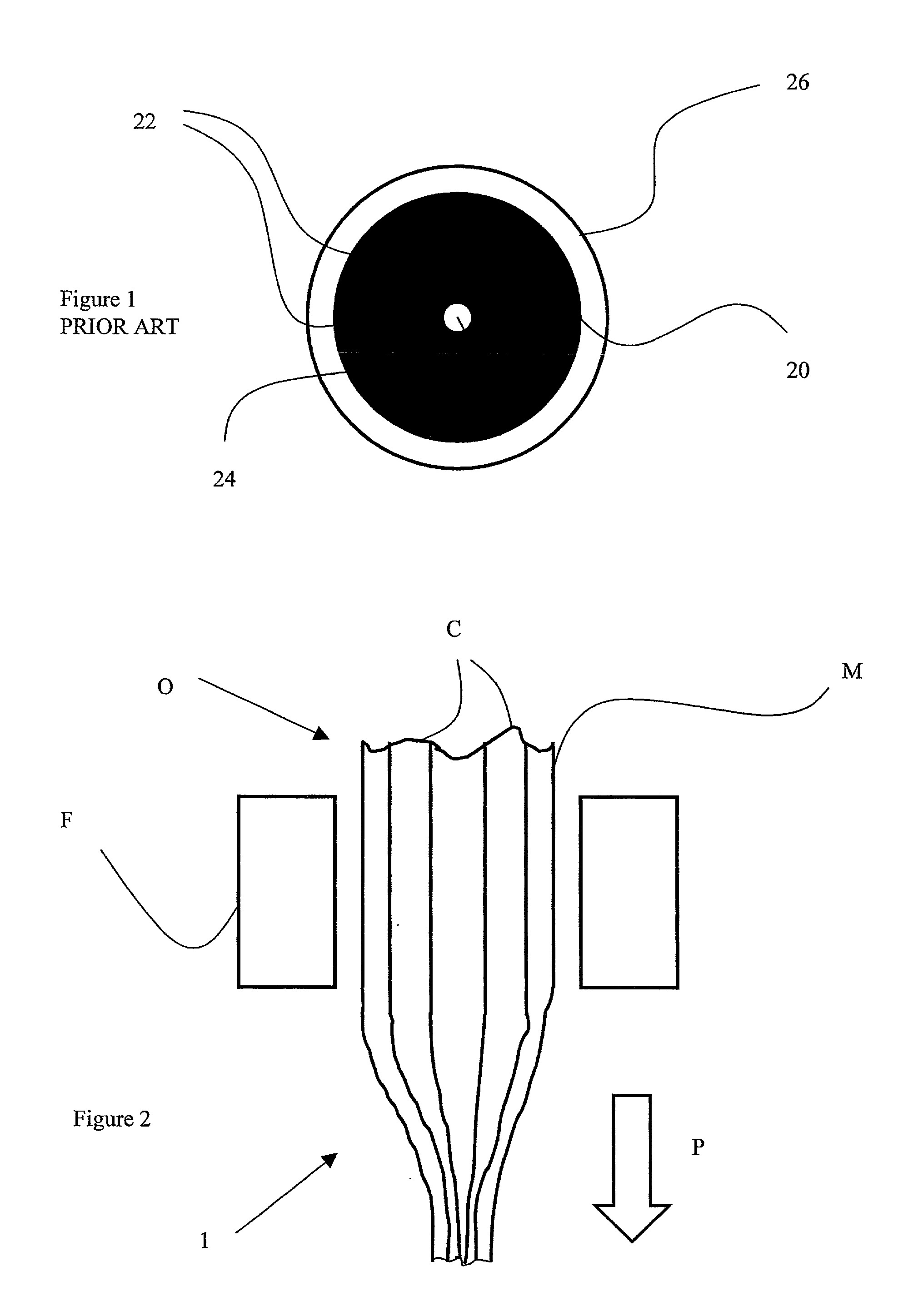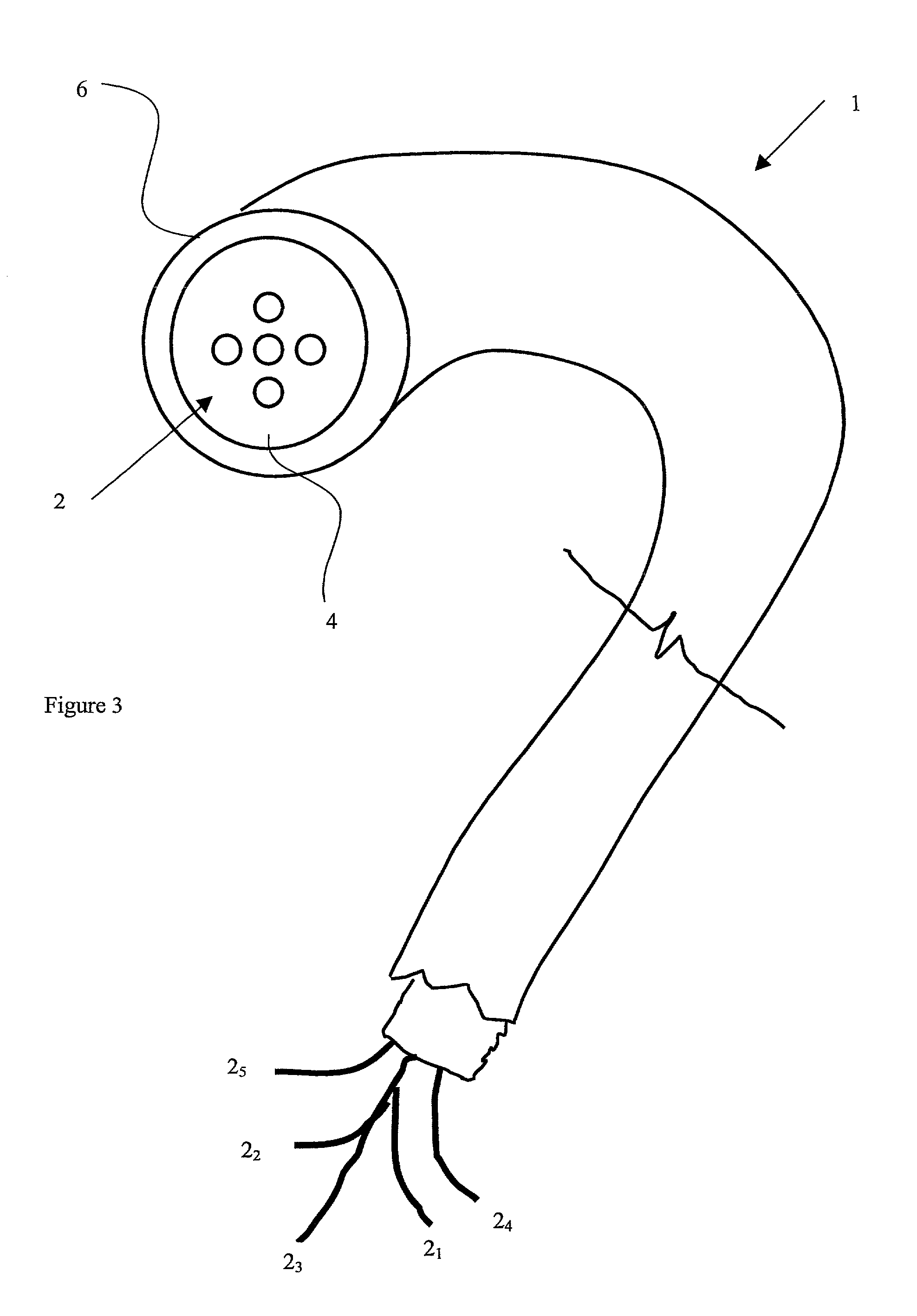Micro-structured optical fibres
a micro-structured, optical fibre technology, applied in the direction of cladding optical fibres, manufacturing tools, instruments, etc., can solve the problems of limiting the length of pcfs that can be produced, central defects may be created, and central defects can be created, so as to achieve relative ease the effect of controlling the core siz
- Summary
- Abstract
- Description
- Claims
- Application Information
AI Technical Summary
Benefits of technology
Problems solved by technology
Method used
Image
Examples
Embodiment Construction
[0032] With reference to FIG. 2, a multiple core optical fibre preform O is provided by fusing together parallel strands of core material C and a cladding material M so as to embed the cores in the cladding. The preform O, with its multiple core preforms C, is then size reduced down to the required dimensions by heating it until plastic and pulling one end. The preform is heated in a furnace F and pulled in the direction shown by the arrow P.
[0033] A micro-structured optical fibre precursor is made by either pulling the multiple core optical fibre preform O so as to size reduce it on one operation, or in a separate operation, a multiple core optical fibre, having previously been fabricated, is heated and pulled so as to size reduce it. The precursor is encased in a jacket.
[0034] With further reference to FIG. 3, a micro-structured optical fibre precursor 1 has five solid multiple cores 2 (for the purpose of illustration only five cores 2 are shown) surrounded by a cladding 4 encased...
PUM
| Property | Measurement | Unit |
|---|---|---|
| length | aaaaa | aaaaa |
| power | aaaaa | aaaaa |
| size | aaaaa | aaaaa |
Abstract
Description
Claims
Application Information
 Login to View More
Login to View More - R&D
- Intellectual Property
- Life Sciences
- Materials
- Tech Scout
- Unparalleled Data Quality
- Higher Quality Content
- 60% Fewer Hallucinations
Browse by: Latest US Patents, China's latest patents, Technical Efficacy Thesaurus, Application Domain, Technology Topic, Popular Technical Reports.
© 2025 PatSnap. All rights reserved.Legal|Privacy policy|Modern Slavery Act Transparency Statement|Sitemap|About US| Contact US: help@patsnap.com



